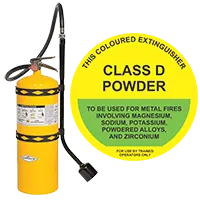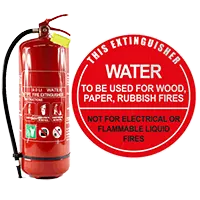Are Electric Vehicles Fire Safe?
 In short: Yes,
In short: Yes,
 In short: Yes,
In short: Yes,
 In Australia, Class D fire extinguishers are used on combustible metals, such as magnesium, titanium, sodium, etc., which require an extinguishing medium that does not react with the burning metal. Here’s a guide on how to identify them, how they work and when to use them safely:
In Australia, Class D fire extinguishers are used on combustible metals, such as magnesium, titanium, sodium, etc., which require an extinguishing medium that does not react with the burning metal. Here’s a guide on how to identify them, how they work and when to use them safely:
 In Australia, Water Class A extinguishers are one of the most common fire extinguishers on the market. Water is a very cost effective solution and has zero impact on the environment. Here’s a guide on how to identify them, how they work and when to use them safely:
In Australia, Water Class A extinguishers are one of the most common fire extinguishers on the market. Water is a very cost effective solution and has zero impact on the environment. Here’s a guide on how to identify them, how they work and when to use them safely:
 In Australia, Wet chemical Class F extinguishers were developed for modern, high efficiency deep fat fryers in commercial cooking operations. They may also be used on Class A fires in commercial kitchens. Here’s a guide on how to identify them, how they work and when to use them safely:
In Australia, Wet chemical Class F extinguishers were developed for modern, high efficiency deep fat fryers in commercial cooking operations. They may also be used on Class A fires in commercial kitchens. Here’s a guide on how to identify them, how they work and when to use them safely:
 Carbon Dioxide Fire Extinguishers are most commonly used for Class E fires (Electrical) in Australia. Also known as a CO2, or
Carbon Dioxide Fire Extinguishers are most commonly used for Class E fires (Electrical) in Australia. Also known as a CO2, or